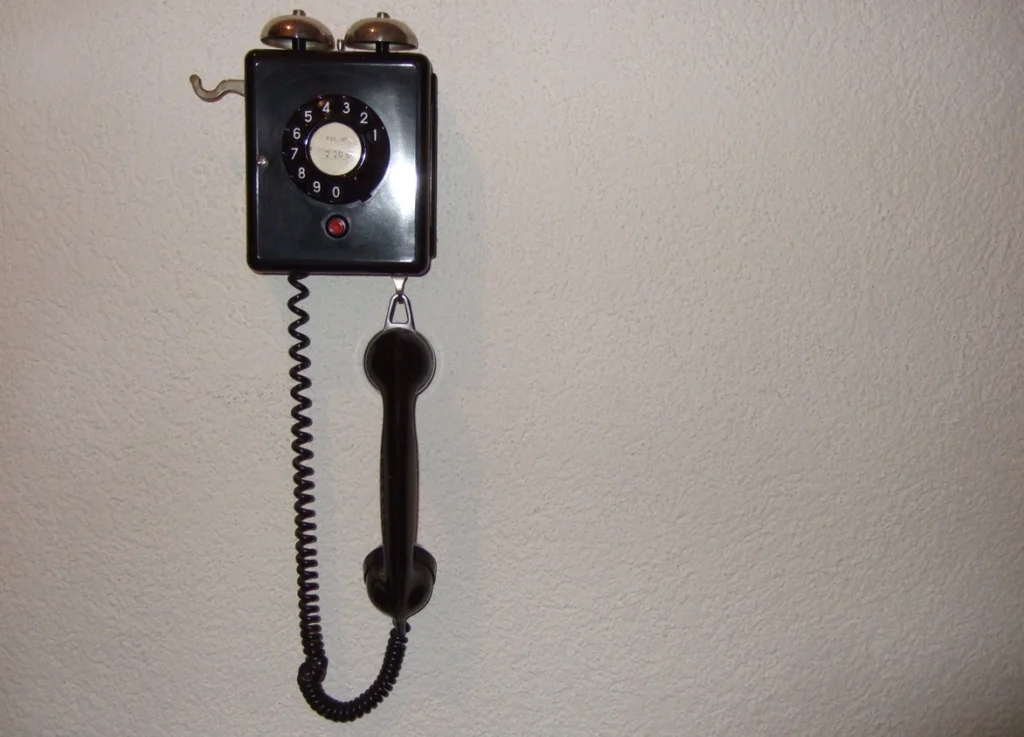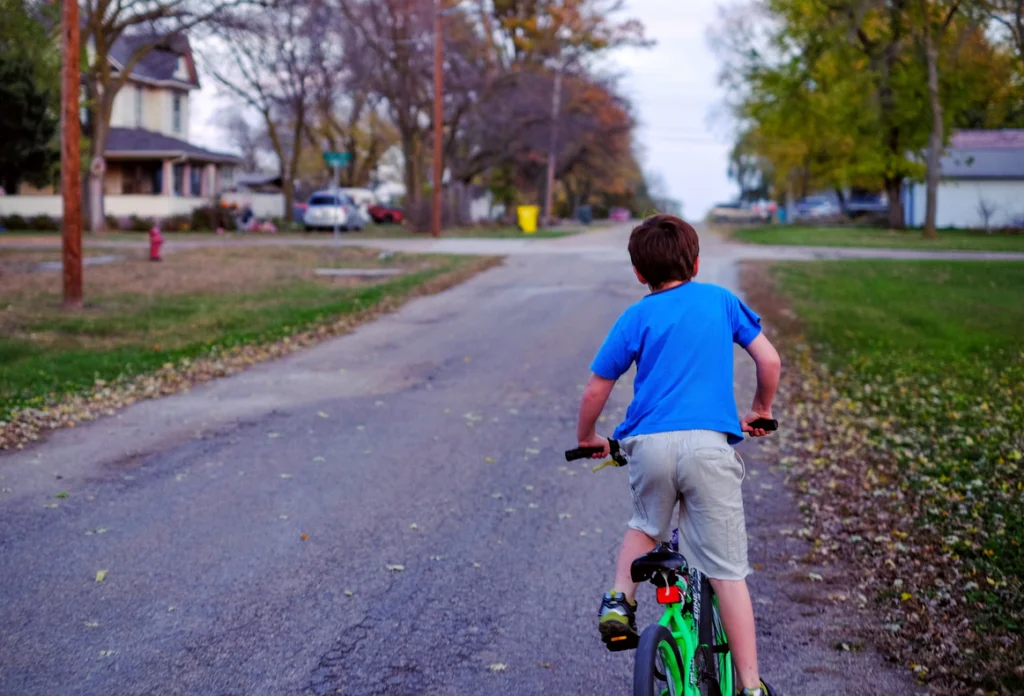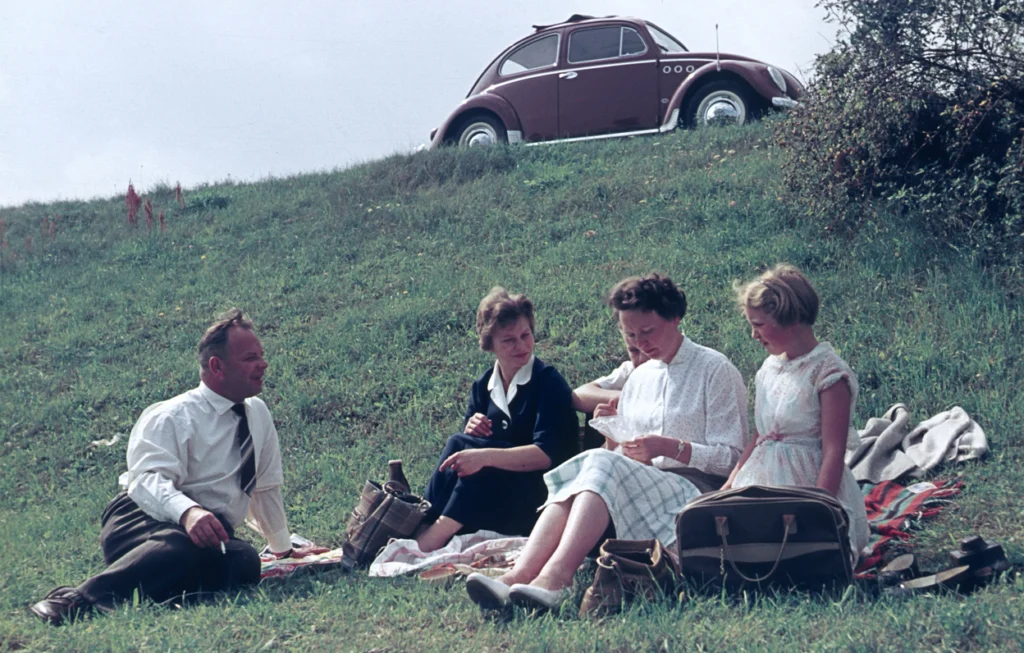Before helicopter parenting, safety warnings on everything, and the constant digital connection of today’s world, kids who grew up in the ’60s, ’70s, and ’80s operated under an entirely different set of social guidelines. These weren’t rules written in any handbook — they were the unspoken understandings that every kid somehow just absorbed through the cultural ether. Looking back, these shared experiences formed a generational shorthand that still resonates with anyone who grew up during these decades.
1. When the Streetlights Came On, You Went Home

The most universal childhood timer wasn’t a smartphone alert or a parent’s text message — it was the neighborhood streetlights. When they flickered on at dusk, it was nature’s way of saying your outdoor play permit had expired. This wasn’t a suggestion; it was the unwritten curfew that crossed all neighborhood boundaries, socioeconomic levels, and parenting styles. No watches needed, no arguments permitted. According to Love What Matters, some parents are trying to bring back these practices and ’80s independence in general.
Parents never seemed to explicitly coordinate this system, yet somehow it functioned flawlessly across America for decades. The beauty of the streetlight rule was its seasonal adjustment — longer play hours in summer, shorter in winter — without anyone needing to renegotiate terms. Kids learned to squeeze maximum adventure into daylight hours and developed an almost supernatural awareness of how much time remained before those lights would inevitably signal game over.
2. The Back Seat Was a Lawless Territory

Long before mandatory seat belt laws and child safety seats, the back seat of the family car existed as a sovereign nation with its own rules (or lack thereof). Children could lie down, kneel backwards to make faces at drivers behind them, or slide from one side to the other taking corners. On long trips, siblings understood that an invisible but critically important boundary line divided the back seat into territories, and crossing it with so much as a finger constituted an act of war. For those curious about discrepancies between belt types, HowStuffWorks has explored why different vehicles now have different seatblet requirements, including up in the sky.
Parents would occasionally reach back with one arm to break up particularly egregious boundary violations, often while driving 65 mph and not looking backward. The threat to “pull this car over” was understood to be nuclear-level serious but rarely executed, existing primarily as deterrence. Remarkably, despite this apparent chaos, most children understood that certain behaviors — like blocking the driver’s rear view or touching radio controls — were absolutely forbidden.
3. Saturday Morning Cartoons Were Sacred

In an era with just three television networks and no on-demand viewing, Saturday morning from roughly 8 am until noon was universally recognized as children’s television time. This wasn’t merely programming — it was a sacred ritual that required proper preparation (specific cereal, pajamas) and absolutely could not be interrupted by mundane activities like chores or family outings. Parents intuitively recognized the sanctity of this time slot and would typically delay weekend family activities until the cartoon block concluded. For those looking for some quality viewing material, CBR has a list of some of the best cartoons to binge over the weekend, of course with a box of sugary cereal and a cape made out of a pillowcase.
The unwritten rule extended to proper cartoon etiquette: younger siblings could be present but were expected to sit quietly, bathroom breaks were timed for commercials, and changing the channel required a democratic process or at least advanced warning. Children who grew up in this era still recall the deep betrayal felt when a special news report interrupted their cartoons, creating a lifelong skepticism about the relative importance of world events versus finding out if Wile E. Coyote would finally catch the Road Runner.
4. The Phone Cord Only Stretched So Far

The family telephone — mounted to the kitchen wall with its impossibly tangled cord — operated under complex jurisdictional rules that everyone somehow understood. Conversations longer than five minutes required moving to sit on the floor, and stretching the spiral cord to its maximum length to reach a bedroom doorway represented the absolute limit of privacy one could achieve. Everyone intuitively understood that parents needed access to incoming calls, creating an unspoken time limit on teenage conversations.
The most sophisticated practitioners mastered the art of twisting their bodies around the stretched cord while simultaneously writing notes with one hand and holding the heavy receiver with their shoulder. Siblings knew that unplugging the phone or picking up another extension crossed a line of betrayal that justified immediate and severe revenge. The introduction of longer cords, and eventually cordless phones, represented not just technological advances but fundamental shifts in household power dynamics.
5. If You Left the Neighborhood, You Told Someone

Children roamed surprisingly far from home in these decades, but one cardinal rule persisted: you had to tell someone where you were going. This wasn’t necessarily your parent — often an older sibling, neighbor, or friend would suffice as the information repository. The system worked on mutual understanding: parents granted freedom in exchange for rough knowledge of your whereabouts, with no GPS tracking or text updates required.
This rule scaled with age: a seven-year-old might need to stay within shouting distance, while twelve-year-olds could venture to the mall or movie theater as long as someone knew. The punishment for violating this trust wasn’t just being grounded — it was the devastating reduction of your roaming radius back to the front yard until trust could be rebuilt. Kids intuitively understood this was a reasonable exchange for the remarkable freedom they enjoyed.
6. TV Adjustments Required Technical Expertise

The family television set, with its mysterious horizontal and vertical hold knobs, rabbit ear antennas, and precise tuning requirements, operated under strict hierarchical rules. Generally, only dad was authorized to conduct major adjustments, particularly during important sporting events or news programs. Children might be permitted to make minor antenna adjustments under supervision, often being commanded to “stand there and don’t move” when their body position somehow improved reception.
This rule extended to changing channels — a practice that in the pre-remote era required physical interaction with the set and was therefore subject to approval. Even after remote controls became common, unwritten family law dictated who controlled this powerful device (usually the parent who paid for the TV). The exception to these rules came during after-school hours when children briefly gained technological authority, though everyone understood this power transfer was temporary.
7. You Answered Other Parents as Respectfully as Your Own

The neighborhood operated as a loose collective of parental authority where any adult could reasonably direct, question, or discipline any child. If Mrs. Johnson from three doors down asked what you were doing, you answered with “Yes, ma’am” and “No, ma’am” just as you would with your own mother. This network of supervision functioned as a powerful behavioral regulator, as children knew reports of misbehavior would travel faster than they could run home.
This extended to phone etiquette, where answering another family’s telephone required a formal and polite greeting that identified both yourself and the household. Children instinctively understood that how they behaved in other people’s homes directly reflected on their parents and family reputation. The phrase “wait until your father hears about this” carried extra weight when delivered by a neighbor or friend’s parent, creating an accountability system that extended well beyond individual household boundaries.
8. Bike Rules Were Universal

Bicycle ownership came with an unwritten but detailed code of conduct that spread among children with no formal instruction. A bike left on its side in a front yard signaled the owner was inside that house and would return shortly — touching or moving it violated sacred trust. Popping a wheelie or riding with no hands was required to establish proper neighborhood credibility, but showing off these skills in front of parents was strictly forbidden.
The most serious rule involved reporting accidents truthfully to your friends but selectively to parents. A spectacular crash that resulted in visible injuries required full disclosure, but minor spills and resulting bent handlebars might be explained through creative narratives involving unavoidable circumstances rather than risky behaviors. Children understood that bikes represented both transportation freedom and a significant financial investment, creating a complex relationship governed by respect for the machine and strategic management of adult concerns.
9. The Good Dishes Were Not for Regular Days

Every household maintained a clear distinction between everyday plates and “the good dishes” — special tableware that occupied china cabinets or high shelves and emerged only for holidays, special occasions, or visits from particularly important relatives. Children absorbed through observation rather than instruction that these dishes required careful handling, could not go in the dishwasher, and were never appropriate for breakfast cereal or peanut butter sandwiches.
This rule extended to other household items — guest towels in the bathroom that were for display only, plastic covers on living room furniture, and certain rooms or areas that were intended more for looking than using. Christmas dinner on the everyday plates would have been unthinkable, while using the good china for a regular family meal would generate genuine concern about someone’s mental wellbeing. This distinction taught children concepts of occasion, hierarchy, and preservation without a single explicit lesson.
10. Water from the Garden Hose Was Perfectly Acceptable Drinking Water

Despite having clean tap water inside the house, children understood that running back inside for a drink would only interrupt the flow of play. The garden hose, regardless of how hot or rubbery the first blast of water tasted, provided perfectly acceptable hydration according to the unwritten childhood health code. This rule applied only to children — adults would sooner die of thirst than drink from the hose, creating one of childhood’s first recognized double standards.
The hose water rule included specific technical knowledge: always let it run for a few seconds to clear the hot water, don’t touch the brass nozzle that had been baking in the sun, and never drink from someone else’s hose without permission. This practice created a communal watering station in whichever yard had the current game, with children routinely sharing the hose without cups or concerns about germs. Parents somehow both disapproved of and tolerated this practice, creating a rare loophole in general hygiene requirements.
11. You Didn’t Change the Radio Station During Someone Else’s Song

Long before personalized playlists, music existed as a communal experience governed by delicate social contracts. When someone exclaimed “That’s my song!” as a tune started on the radio, changing the station became a serious breach of friendship etiquette. This rule applied in bedrooms, at parties, and especially in cars, where the complex hierarchy of who controlled the dial included exceptions for personal favorite songs regardless of who had primary radio privileges.
For teenagers especially, identifying “your song” represented an important declaration of personality and taste. Friends were expected to respect these musical allegiances even if they personally couldn’t stand the artist. The introduction of cassette tapes and mix tapes further codified these rules, with skipping someone’s carefully chosen song considered a direct insult to their musical judgment and possibly their entire worldview. This system taught negotiation, patience, and the art of tolerating Journey songs when necessary to preserve social harmony.
12. Calling After 9 PM Was for Emergencies Only

The family telephone operated under time-specific regulations that everyone somehow knew without being told. Calling during dinner hours (generally 5-7 PM) was frowned upon but occasionally permissible for homework questions. Calls after 9 PM, however, were strictly reserved for genuine emergencies. This rule was so deeply understood that a late-night ring would cause instant household panic, with parents rushing to answer expecting news of death or disaster.
This time boundary applied even to teenagers, who developed elaborate workarounds including planned calls at 8:59 PM that might “accidentally” extend longer and prearranged signals like letting the phone ring exactly twice before hanging up to convey coded messages. The 9 PM rule gradually shifted later through the decades but remained in effect even after answering machines and then voicemail became common. The introduction of “night minutes” on cell phone plans in the early ’90s represented the first serious challenge to this longstanding social boundary.
These unwritten rules weren’t just quirky cultural artifacts — they formed a sophisticated social contract that allowed children remarkable freedom within understood boundaries. Unlike today’s more explicit parenting approaches, ’60s, ’70s, and ’80s childhoods operated on assumptions, implications, and modeling rather than spelled-out regulations. Kids learned to read rooms, recognize boundaries, and adapt to different settings with minimal instruction. The system wasn’t perfect — plenty of boundaries were tested and rules broken — but it created a childhood experience where independence was balanced with responsibility in ways today’s more structured upbringings rarely allow.


